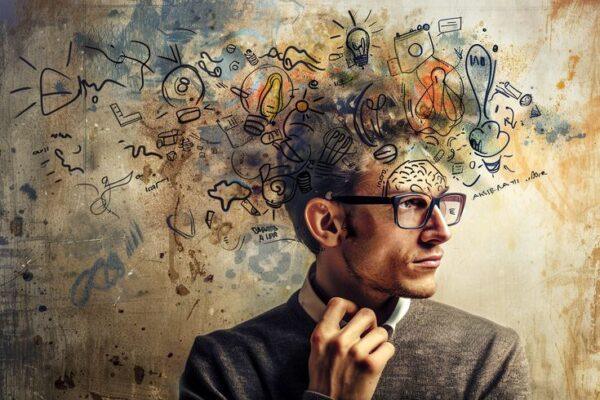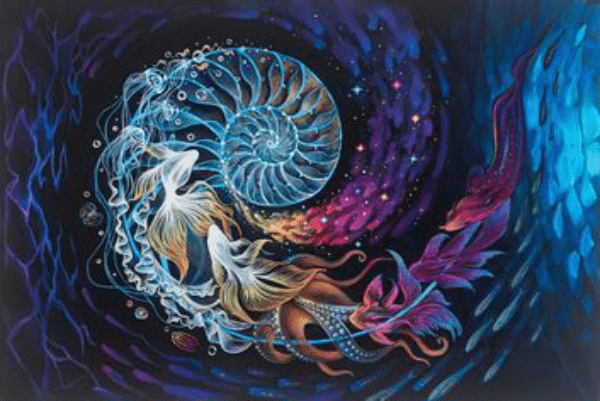Compassion – The Nature of Perception, Judgment and Self-Realization
While many people perceive compassion as an act or something you do, true compassion is the result of a state of mind that you embody as a way of perceiving others from a non-judgmental perspective. It’s the primary way we come to understand others by understanding ourselves in them. It’s an intuitive lens we look through that always seeks first to understand rather than judge or condemn. We only truly love what we understand, and we only understand by being able to relate to that same idea in ourselves, which requires self-reflection. It’s bearing witness to someone else’s experience by looking at it through their eyes and as they experienced it, without the need or unconscious tendency to alter it through moral judgment, and make it about you by correcting their perception, making it wrong or bad somehow (deeming your perspective more accurate and right), or reforming their experience by reliving it from your own perspective instead.
Whatever state-of-mind as an attitude that we walk through life with determines our approach and how we see things, as well as how we interpret what we see to give it meaning, which is what shapes our experience of it. If we have an attitude of judging, of finding what’s wrong or bad about someone or something, then we see in them only what warrants judgment. Through our very perception of something as a quality of consciousness or way of being, we stimulate and activate that same quality in them, bringing it out in them through the nature of our interaction as a joint expression. We can only perceive in others what’s in us, because it’s our model that we’re looking through in order to form our experience of them. We never really perceive others or the outer objective reality as they actually exist apart from us, but rather as we remake them through our experience of them, that makes them like us.

Our Mental Paradigm is Our Lens of Perception
Our mental paradigm is constructed over many years through the incorporation of our values, beliefs, memories, preferences, temperament, etc., which together form a dynamic matrix that systematically produce our personal reality. Our personal reality is not the same as the objective reality we all share in common as a part of mass consciousness and the material world, but rather how we reformulate it through the lens of meaning that produces how we experience it as a personal creation. We reshape it through a process of resonance as natural selection that turns some aspects on (activates them making them stand out), while turning others off (recede and go unnoticed), where we only notice certain aspects, the ones that match our paradigm, while failing to recognize others altogether. By mentally enhancing, embellishing, or exaggerating selected aspects while downplaying others and leaving out others, we reform it to the same nature as we are as the testimony of our beliefs about it.
We assign everything the same qualities as we ourselves possess by how we interpret them to give the ideas and behaviors being expressed meaning. The meaning we give things forms the story we tell ourselves about them and how we form our experience of them as a result. Each person creates a unique experience of the same idea, event, and set of circumstances, by filtering it through their mental model, conforming and reshaping it accordingly. This is the most fundamental act of resonance, sympathetic induction, and coherence as the primary law of the mind and vibration. As we begin resonating with something, we energetically blend with and enter into it, becoming one with it in mind, and by how we act to influence it, we alter it by forming a new vibration that’s a combination of both as a form of offspring, where both ideas begin vibrating in harmony with each other.
The man made concept of right and wrong, and good and bad as our values forms the basis for our judgments and prejudices. In the natural world of instinct, all forces and powers simply exist as attributes and qualities that act to shape characteristics that form natural behaviors. The idea of right and wrong originated as an evaluation of what results as an expression of character that creates by producing phenomena of some sort. The fundamental appraisal of whether or not something is good or bad is usually based on whether it’s creative, constructive, and beneficial, or whether it’s chaotic, destructive, and harmful in some way. All qualities, regardless of their nature, are dual in nature and hold the potential of being good or bad based on the context in which they’re being used. All behavior is appropriate when employed under certain circumstances. Violence, when used in a destructive manner to violate, hurt, or kill for selfish reasons, would be judged (evaluated) as being bad or evil, whereas if that same act of violence was used to protect, defend, or carry out a necessary justice, it would considered good and divine in nature. Same act, different reason and context.

Likewise, judgment itself is of a both good and correct nature, and a bad or incorrect nature, depending on how it’s being used. The mind is always using its ability to evaluate ideas and situations as the means of making decisions and acting that we call using good judgment. In these situations we employ an objective mindset that’s neutral and unbiased, where we openly perceive the nature of people and things involved, then make an evaluation based on what’s being demonstrated and observed, and make a decision accordingly. False judgment, the one most are referring to when they use the term judgment, comes as a form of prejudice that we employ beforehand and use as a lens that we look through that alters what we see to match our preconceived judgment of it. We walk into a situation with a preconceived idea or value that they themselves are not demonstrating outwardly, and we form an opinion of them based on the values we’re assigning to them, instead of the ones they actually possess, and use it as a means of interpreting their behaviors or experiences to mean what we want them to mean, rather than what they actually do mean.
Compassion is to relinquish judgment all together and seek instead to only relate and understand. It’s to embody a primary state of love as communion. We can only truly love what we first understand. Whatever lens we use to look through, we vibrate at that frequency, and connect to that same frequency in others, stimulating it in them, bringing it out as an active state that then forms the basis of the interaction. We serve to naturally call forth in others whatever is actively expressing in us, not only through the nature of our interaction, but just through our perception of them as an energetic interaction of stimulus-response, and action that produces a like reaction. Whatever we place our attention on (gaze at), we stimulate and reformulate by awakening certain aspects, while returning other aspects to a latent state. Our consciousness interacts with the same consciousness in everything else. We’re always remaking others in our own image and with our own likeness.
To be compassionate, or to more accurately embody a state of compassion, is to withhold all judgment and preconceived ideas and look upon others and the experiences their going through from their perspective, while relating to those same ideas in our own experiences, helping you to understand what their going through, or what process of realization their involved in. It’s to listen to them express how their experiencing something, what their contemplating, or how their stepping into and experimenting with an idea as a means of forming some kind of self-realization through it that will help make decisions based on it. All experience comes through experimentation of some kind that provides the basis for self-realization based on the decisions we make due to what we realize. As we experience something, we’re exploring, tapping into new aspects of ourselves stimulated and brought out through the experience, and learning about ourselves and growing as a result. We’re always learning about ourselves, others, and the way the world is through direct experience and making constant decisions about and for ourselves based on them. If we like how we feel, what we do, and who we become in a situation, we continue into it. And if we don’t, we stop it, avoid it in the future, and don’t act to repeat it. All experience is self-created and provides us with knowledge about ourselves that we use to create ourselves through choice and free will.

As we enter into relationship with another, and bear witness to their experiences by listening to them as things were for them, while simultaneously tuning into and touching on our own experiences of a similar nature, we relate to them, and by relating to them we understand where their at in their learning process. We can understand what part of the process their in and maneuvering as a way of creating themselves by way of their own evaluation and interpretation. We can realize that same act in ourselves, and how we formed conclusions based on the same type of idea, while realizing and honoring the fact that they may form an entirely different conclusion, and simply being with them in that process, while gaining a whole new way of perceiving it. By sharing in another person’s experience while relinquishing the need to be right or more correct, and therefore modifying it, we fully engage in it as an imaginary journey that has something else entirely different to show us about new and unexplored possibilities.
Through the practice of witnessing, which is to act as a passive observer and neutral mirror for someone else’s experience by listening intently while imagining it from their perspective as it is or was for them, without changing it through our own values and beliefs (judgments), or commenting on it in any way, we not only help the other person to gain deeper realizations into the lessons of their own experiences, but we also gain the experience as a form of lesson or self-realization for ourselves by way of their experience. We’re offered the lesson without having to live it ourselves, but rather through the experience the telling provides, and how we merge into and relate to the experience. When we become one with another by sharing in their experiences, we acquire many more lessons that bring new and varied realizations that serve to naturally shape us through the acquisition.
Whenever we listen to someone else tell their story, or we see them in a particular situation, and we remove all judgment, we tune into that part of ourselves that have had similar experiences or events, where we’ve been in a similar situation, and had the same type of thing happen to us, and we can relate and understand what they’re going through, and we can respond or interact in kind. When we look through the eyes of judgment, we still tap into that part of us that had a similar experience or was in a similar situation, that we deny having and therefore repress and don’t own it, because we judged ourselves while in that situation the same way we’re now judging someone else. Value judgment, for the most part is taught, and we usually grow up judging others in the same way we were judged. We literally do unto others as it was done unto us. Just as we were taught to feel bad about something we did, or see ourselves as a bad person for being that way or doing what we did, we disown those parts of ourselves, pretending and convincing ourselves were not that way, while building them into our mental model as a filtering system that we look through and project onto others, seeing those same behaviors and judgments in them.

When we’re judged we’re literally being given the criterion and means for making judgments of other as an interpretation of this means that. Whenever someone does this or participates in that, it means this about them, and we perceive them through our judgments just as we were perceived by others who were judging us. We’re not only taught to judge as a fundamental way of perceiving, but given the criterion as our means of applying values that draw natural and consistent conclusions. Because this training comes as part of our formative conditioning and is developed as a subconscious process that forms our fundamental way of perceiving the world, we usually don’t even realize that’s what we’re doing. In this way, all value judgments, in their most basic sense, are a form of self-creating out of an unconscious state of learned behavior.
We often think judgments are the observation of an objective reality secured by a set of golden rules. We imagine that these values and rules are fact and true, rather than what they really are, which is something we made up or was trained to by the opinion of others and formed an agreement around by accepting them as our own. We’re given our values and ways of perceiving as behavioral dynamics through our childhood conditioning that we continue creating out of throughout our adult life. The inner child, so to speak, becomes the adult. However we’ve been trained up to the age of seven or eight becomes the core beliefs and mental model that we continue perceiving and creating out of the rest of our life in a natural and automatic manner.

Practicing Self-Awareness and Realization
There are several practices that you can routinely employ as a means of not only gaining self-awareness of what you’re actually doing in any situation, but also as a primary means of cultivating compassion. In any situation where you realize you’re forming a judgment of someone, regardless of what it is (remove all concepts of right and wrong), catch yourself, and turn inward instead and self-reflect. Ask yourself, have I had any experiences of a similar nature? Have I been in a similar situation? Did I explore the same idea at some point in my life? Tap into the same idea in yourself, in your own experience, and use it to relate to them. Give up the need for them to experience it in the same way that you did, or draw the same conclusions based on the same values and make the same decisions, and simply use it to understand where they’re at and what they’re going through as a lesson. Ask yourself . . . am I prone to the same thing? Have I explored and experimented with the same idea? Could this same type of thing happen to me?
As you tap into and touch on that same aspect in yourself, you have the means of relating to them, and understanding them as a result. You have to be honest with yourself and not see the conclusions you drew or decisions you made because of your experiences of the same nature as the means of denying ever having them. Or the idea that if you admit it, even to yourself, that it’ll mean something bad about you (usually the same thing you’re judging the other person with). Many times we judge others as being bad or wrong somehow due to experiences we’ve never had, so of course it’s difficult for us to relate or truly understand, and if we ever do find ourselves in a similar situation, rather than understanding, we usually condemn ourselves in the same manner we’re now condemning them.
If instead, we put ourselves in the same situation, by imagining the same thing happening to us, or listening to their story and experiencing it as it was for them, we gain an understanding of them and ourselves at the same time. We can relate to how they feel, and feel a sense of compassion towards them as a result. By living out experiences with others, we gain insights into ourselves through them. We’re afforded the lesson without having to have the actual experience. This is the value of stories, folklore, and myths; we get to learn through someone else’s experience. Nowadays we get much the same thing out of watching movies and reading novels.

Summary:
Whatever state of mind we possess and cultivate at any given moment, become our perceptual lens, and we only see in everyone and everything what matches it. If we look through the lens of judgment, we see only what warrants judgment, and we remain disconnected from those same aspects in ourselves. As we judge others, we simultaneously judge ourselves in the same manner. We shape ourselves and others according to our judgments. All perception is projection. We’re only capable of seeing in others what exists in us.
If we look through the eyes of reverence and compassion, we likewise, only see what warrants that. When we go into any relationship or situation with an attitude of understanding, we connect with others at an entirely different level, and connect with and touch on those same ideas and qualities within ourselves, learning about ourselves in a new way. Just as we form an understanding of others, and see them as they really are when we relinquish judgment, we come to understand and truly know ourselves to the same degree. Through understanding and compassion towards others and ourselves, we form a natural love for them and ourselves. We can only truly love what we understand and relate to, because all love comes only through union with ourselves in others. We can only love others to the same extent that we love ourselves.
Transpersonal Psychologist, Personal Transformation Coach, and Spiritual Teacher


